Archive for '2021' Category
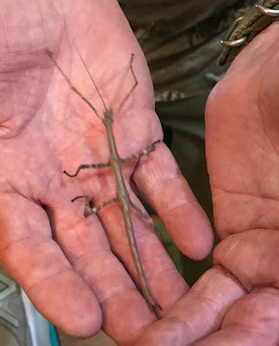
Walking Stick bug
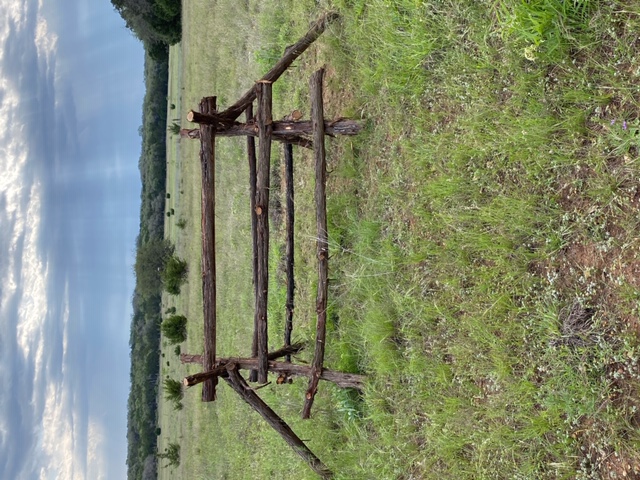
Caretakers built a wooden structure in an open filed of Antelope Horn milkweed plants to provide a place for Monarch Caterpillars to climb and pupate into a Chrysalis.
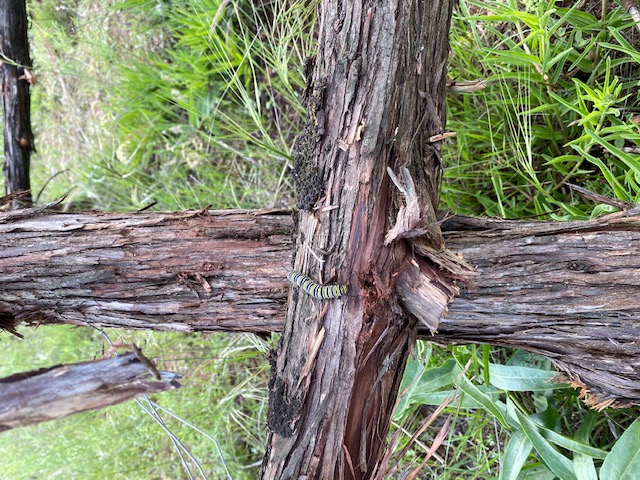
This Monarch Caterpillar is using the new wooden structure.
Posted in
Census, Habitat, 2021
-
Observations of Monarch habitat
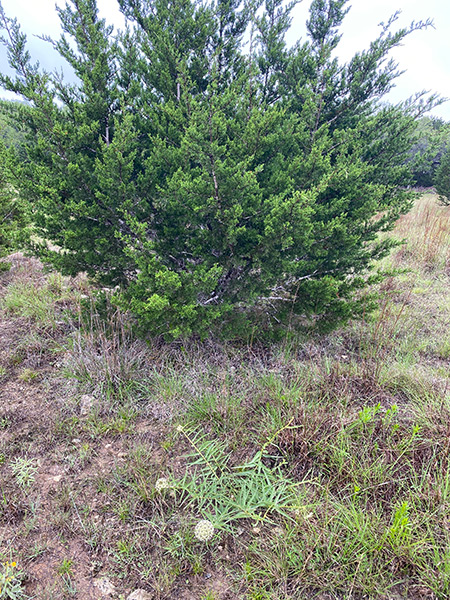
An Antelope Horn milkweed flower with several stems denuded of leaves at the base of an Ashe Juniper tree, indicating Monarch Catrepillar activity.
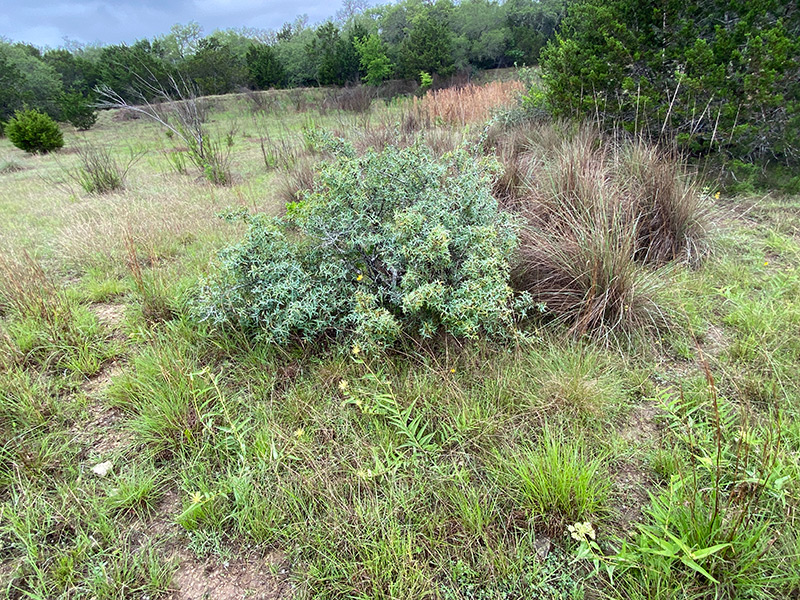
Antelope Horn milkweed flowers beside an Agarita plant. The stems of the milkweed are similarly defoliated as the photo above. Antelope Horn milkweeds further away from trees and shrubs rarely if ever show signs of caterpillar activity.
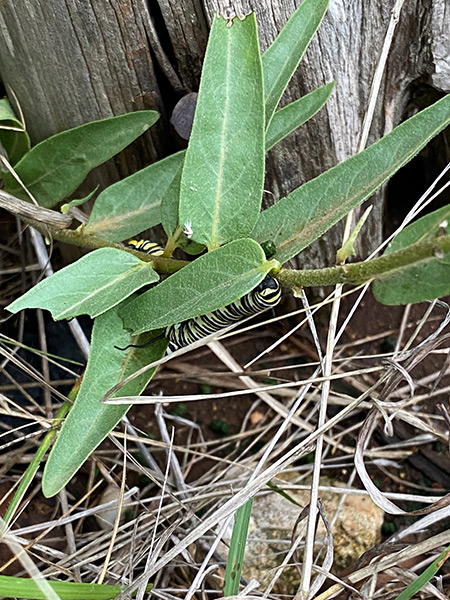
Two Monarch Caterpillars feeding on Antelope Horn milkweed plants next to a pole barn roof support pole. Caterpillars are often found on the underside of the leaves. Caretakers suspect that a female lays her eggs on milkweed plants fairly near a structure so that the caterpillar has better success to safely pupate into a crysalis, without having to cover open ground very far or struggle through tall grass and thatch.
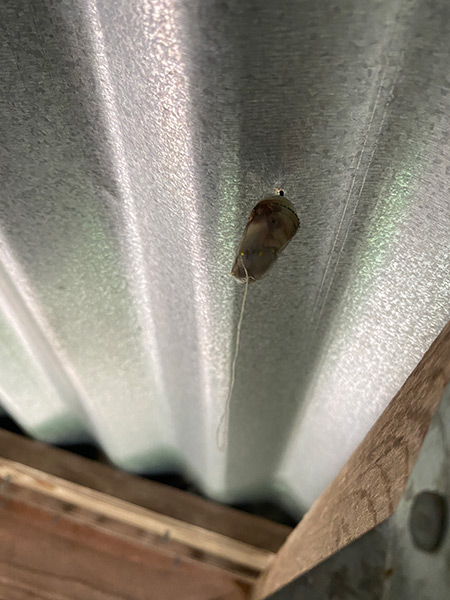
The Tachinid Fly is a predator of the Monarch Caterpillars. It lays eggs inside the Caterpillar, evidence of this predator is seen with a thin string hanging below the Chrysalis. When the fly's eggs hatch, they eat the inside of the caterpillar and/or Chrysalis. Other predators include Ladybugs who have been observed searching Antelope Horn plants looking to eat very small Monarch eggs.
Posted in
Census, Habitat, 2021
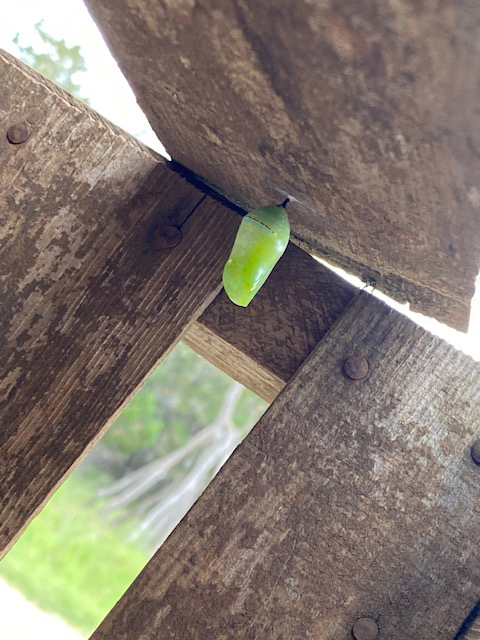
Successsful Monarch Butterfly Chrysalis using the old crate that caretakers provided in the Anetlope Horn field on April 25.
Posted in
Census, Habitat, 2021
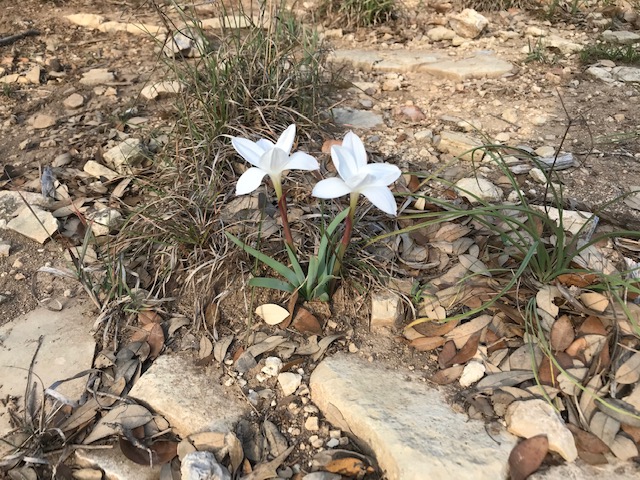
Rain Lilly
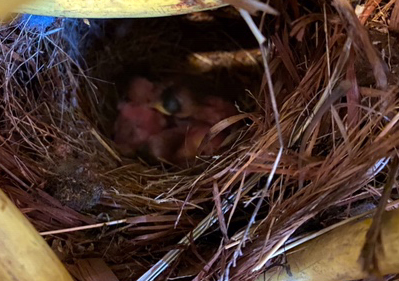
Successful Wren chicks in nest in a coil of electirc wire, eggs first seen on April 8.
Posted in
Habitat, 2021
-
Caretakers found 10 Monarch Caterpillars and 5 Chrysalis's
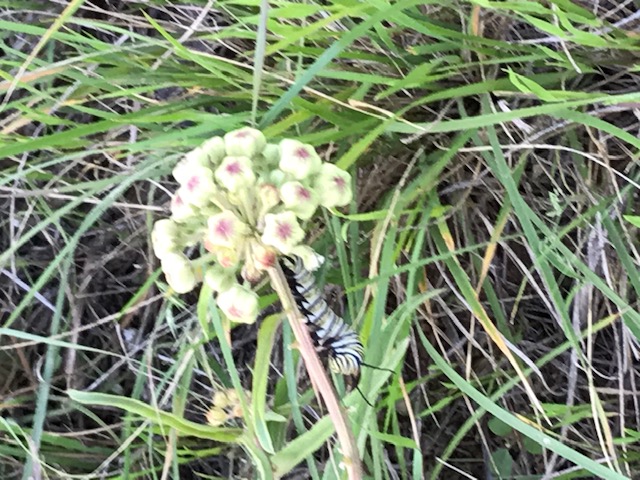
Classic scene of Monarch Butterfly life cycle, beginning as an egg and growing into a caterpillar as it feeds on an Antelope Horn milkweed plant. To find Monarch Caterpillars, look for Antelope Horn plants that have lost leaves that have been eaten by caterpillars, they also eat the flowers of the plant.
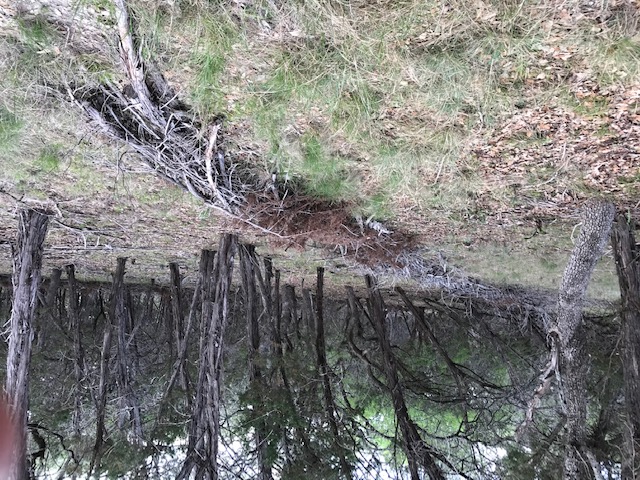
Caretakers removed dead branches of Ashe Juniper, and laid on countour for erosion control. This allows leaves, dirt and debris to pile up against the edge of the berm, allowing infiltration and reducing rainfall runoff. It also provides light to allow grasses to fill in between tree trunks.
Posted in
Census, Habitat, Erosion, 2021
<< Previous Entries












